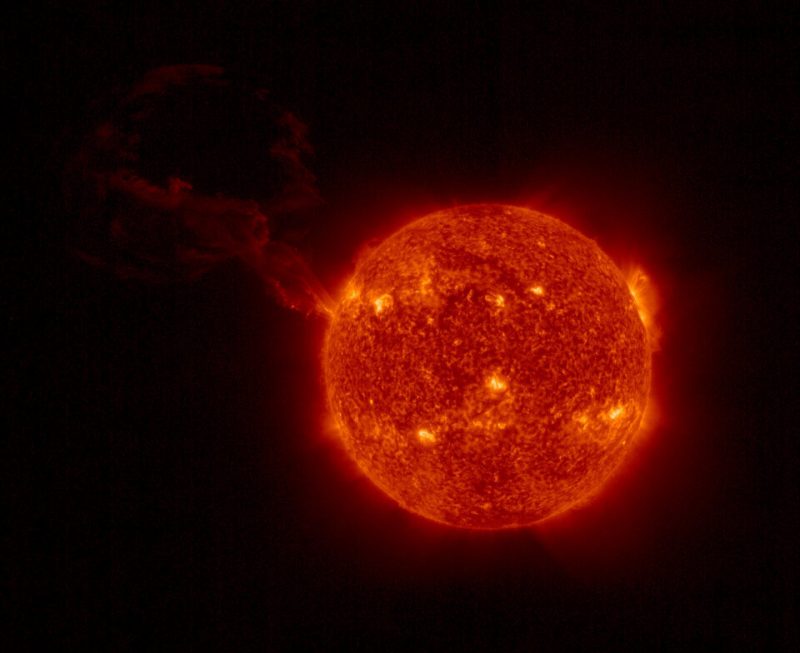
Solar prominence erupts from sun’s far side
The European Space Agency said late last week (February 18, 2022) that its Solar Orbiter spacecraft captured the largest solar prominence ever observed in a single image, together with the full solar disk. The event took place earlier in the week (February 15). The spacecraft is currently near the Earth-sun line. And it didn’t see any sign of this eruption on the solar disk itself. So the prominence must have originated on the side of the sun facing away from us.
We don’t know for sure, but it’s possible the event was spawned by an X-flare, our sun’s most powerful category of solar flare.
Although we didn’t see the flare that caused it, Solar Orbiter did see the prominence extending from the sun’s limb. Prominences like this one are huge structures on our local star, made of superheated gas called plasma, intertwined with solar magnetic fields.
Like Earth, the sun rotates. So scientists are wondering now if a large active region will soon rotate into our view on the sun.
Or will we see only the last vestiges of this major eruption?
What is likely the source of a major far side eruption a couple of days ago is now hiding behind the east limb. Huge coronal loops are visible behind the limb. The question is… are we awaiting the arrival of a large active region or only its remnants? Time will tell… pic.twitter.com/wk6TsikBdo
— SpaceWeatherLive (@_SpaceWeather_) February 19, 2022
The CME wasn’t Earth-directed
Coronal mass ejections, or CMEs, often accompany this sort of activity on the sun. CME are enormous bubbles of plasma that are sometimes directed toward Earth. They have the potential to interfere with satellites and power grids on our planet. But the CME from this giant prominence wasn’t Earth-directed.
The sun is currently in an upswing of its 11-year cycle of activity. So we’re seeing more sunspots, more solar flares (storms on the sun), more prominences and more massive coronal mass ejections (CMEs).
This month so far (February 2022) has yielded a bumper crop of solar flares and CMEs. It’s the most active sun we’ve seen in some time. And we can expect more solar activity as Solar Cycle 25 continues to rise to its peak, which is expected around the mid-2020s.
By the way, a similar event in late January 2022 – a coronal mass ejection, or CME, from an active sun – pulled down 40 recently launched Starlink satellites.
Wow… pic.twitter.com/S7uSPA9Ijy
— Karl Battams (@SungrazerComets) February 16, 2022
Bottom line: The European Space Agency’s Solar Orbiter spacecraft caught the gigantic solar prominence pictured at the top of this post on February 15, 2022. ESA said it’s the largest solar prominence eruption ever observed in a single image together with the full solar disk.
Read more: 40 Starlink satellites doomed by geomagnetic storm
The post Solar prominence breaks record on active sun first appeared on EarthSky.
0 Commentaires